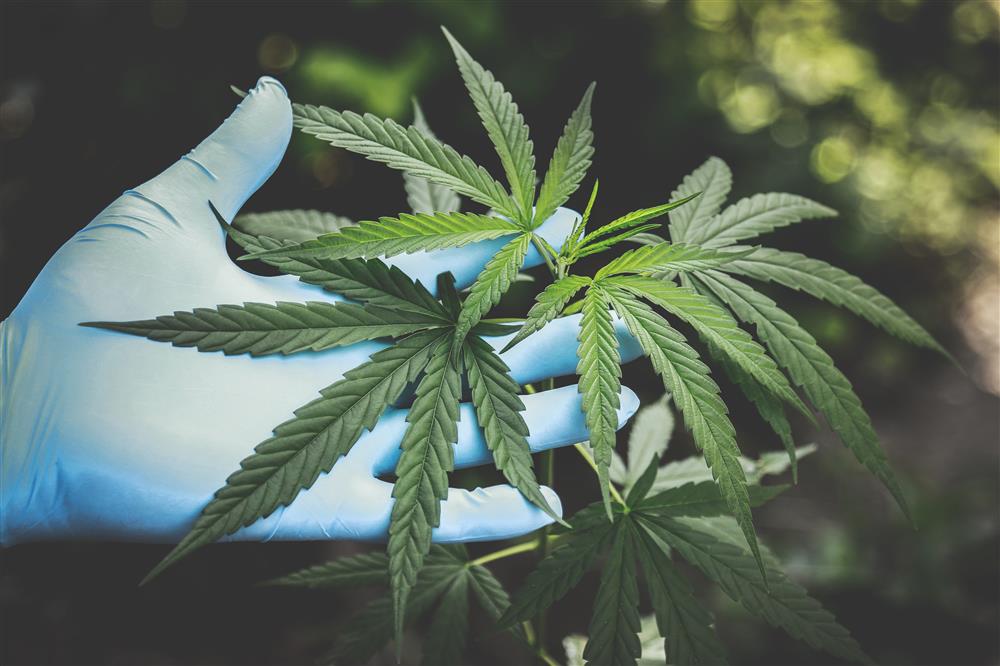A company in the Vipava Valley has developed a modern and safe system, which can be used for the extraction of CBD oil
In recent years, there has been a tremendous increase in interest in products, derived from hemp. This trend is, of course, dictated and followed by manufacturers of hemp-related products on the market. So how should consumers select the “right” product whose quality and safety is guaranteed by the manufacturer, despite the risks associated with obtaining the extract? We talked about this with Dr. Marko Likon, environmental innovator and chemical technologist.
Hemp is an undemanding and organic crop, as well as an excellent raw material for use in various industries. From an industrial point of view, it is very intriguing due to its fast growth, high yield, and versatile use. The fibers in the stems can be used to make fabric, rope, plastics, and biodiesel, but hemp is also useful in construction, cosmetics, and the pharmaceutical industry. Hemp can grow on over 50 % of the earth's land surface. It does not require much fertilization and little to no pesticides. It grows rapidly and can adapt to different climatic conditions and soil characteristics. It absorbs carbon dioxide from the air and effectively incorporates it into its biomass, as well as enriches the soil where it grows.
As it has strong eco-remediation properties, it is very important to know how and where it was grown, as well as how it was processed. "If the soil where it grows contains pesticides, heavy metals, or other pollutants, which may have remained there from previous years, or if a nearby field is intensively sprayed with pesticides, the hemp will absorb all these pollutants. If this hemp is then used to produce extracts, pollutants such as zinc, cadmium, and various organic pesticides are concentrated in the extract along with the cannabinoids.”
According to Dr. Likon, how hemp is handled after harvest, during drying and the storage phase is also very important: "This is where microbiological contamination and mold growth can occur. This can lead to the formation of various toxins (mycotoxins), which are then also concentrated in the final product during the extraction process.”

“If the soil where it grows contains pesticides, heavy metals, or other pollutants, the hemp will absorb them.”
How are CBD oil drops made?
Natural CBD oil drops are usually made using a hemp extract, obtained from flower and leaf trichomes. There are several ways to obtain such an extract which differ based on the type of solvent used and also on the conditions under which the extraction takes place. All this has an important effect on the terpene and cannabinoid profile of the extract, as well as on the amount of impurities. When obtaining certified products, subsequent extract processing is also important, such as wax secretion, concentration and THC extraction.
As Dr. Likon points out: "The most common less demanding extraction methods, which are usually preferred for home use, are extractions with alcohols and gasoline. These solvents are harmful and very difficult to fully remove from the final product – usually they can only be eliminated with complex procedures in specially equipped laboratories. In practice, the only option that should be considered is food grade ethyl alcohol, but it is significantly more expensive than the previously mentioned solvents.”
Are "home" extraction devices safe?
Extractors that use volatile hydrocarbons, such as propane or ether, can be purchased online at reasonable prices, but Likon warns: "Extraction with these solvents enables high yields and easy separation of the used solvent from the final product. However, these solvents are flammable and possibly explosive when mixed with air, which is why international associations do not recommend such extractions. Some manufacturers do offer closed-circuit extractors, but this does not reduce the safety threats.”
Extractions with supercritical fluids
Extractions with supercritical fluids, such as carbon dioxide, water, etc. (READ MORE), and cryo-alcohol extractions are technologically more demanding. Hemp extraction is most often carried out using supercritical carbon dioxide, which is recommended for the production of hemp-based products by the German Federal Institute for Drugs and Medical Devices (monograph DAB 2019). One such system was developed by Dr. Likon and his colleagues at the research and development department at Škrlj d.o.o., a company that is otherwise known for its winemaking, beer brewing and pharmaceutical industry equipment.
Why exactly is supercritical CO2 extraction better? - READ MORE
The system enables a fairly selective extraction of terpenes, cannabinoids, and waxes, and requires less post-treatment and purification of the final products. "With these systems, the extraction process can be precisely controlled by regulating the pressure and temperature, which means that the extraction of unwanted components is reduced to a minimum," explains Likon.
Unwanted impurities (e.g. pesticides and heavy metals) can also be removed before the main extraction is carried out. When the extract is exposed to air, the CO2 evaporates instantly, which means there is no solvent residue in the final product. Carbon dioxide is safe, its use has a minimal carbon footprint and it is inexpensive. The downside of this extraction method is that it requires large investments in high-tech equipment.
The most important thing is to ensure product quality and integrity, which means that the origin of the plant, as well as its quality and the subsequent extraction process must be known and clearly indicated. "Consumers should check that the product is equipped with a certificate of origin, an analysis of possible contaminations and of the cannabinoid profile, the extraction method, and product traceability. Before use, they should also consult their physician.”

Dr. Marko Likon, chemical technologist and R&D engineer at Škrlj d.o.o., where they
developed a sub- and supercritical system, designed for the extraction of
natural bioactive substances with the use of carbon dioxide. Photo: Personal Archive
Read more about the MoSES products and technology HERE.
